Explore the latest insights from top science journals in the Muser Press daily roundup, featuring impactful research on climate change challenges.
In brief:
Were our blue oceans once green?
Imagine the world’s oceans with their beautiful blue color. Now, imagine that the same oceans were green. This is the intriguing possibility suggested by new research from Nagoya University in Japan. A group led by Taro Matsuo has found evidence that cyanobacteria, important bacteria in the evolutionary process, flourished in green seas.
They published their findings in Nature Ecology & Evolution.
Their discoveries suggest how different the world was 2.4 billion years ago during a period called the Great Oxidation Event. This event was triggered by cyanobacteria performing oxygenic photosynthesis for the first time, which used the energy from the sun and released oxygen. Over time, this oxygen accumulated in the atmosphere, dramatically transforming Earth’s environment and paving the way for the emergence of our oxygen-breathing ancestors.
In the modern world, most oxidation is performed by plants, using chlorophylls. However, the ancient cyanobacteria also used additional pigments called phycobilins, which were an integral part of their light-harvesting antennas. The researchers became interested in the question of why cyanobacteria required phycobilins in addition to chlorophylls.
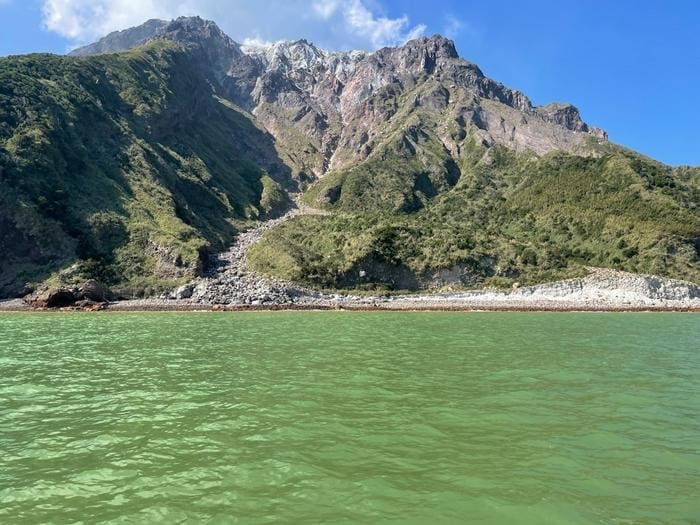
Using advanced simulations, they found that the underwater light spectrum during the Archaean era (4–2.5 billion years ago) changed to green due to iron precipitation. At the time, the Earth’s oceans contained high levels of ferrous iron, which was released by hydrothermal vent systems. The Great Oxidation Event changed this balance, as the oxygen reacted with the iron, changing it from ferrous to ferric iron.
Ferric iron has different properties, such as being insoluble, causing it to precipitate out as rust-like particles. The presence of these iron-rich particles changed the wavelengths of light that could penetrate the water. As the particles preferentially absorbed blue and red light, mainly green light was transmitted, causing the underwater environment to be dominated by green hues.
“Genetic analysis revealed that cyanobacteria had a specialized phycobilin protein called phycoerythrin that efficiently absorbed green light,” Matsuo said. “We believe that this adaptation allowed them to thrive in the iron-rich, green oceans.”
Could we be looking for the wrong signs of alien life?
Matsuo also believes his research may help in the search for life in outer space. On Earth, the ocean appears blue because water absorbs red light and scatters blue; however, the green oceans in the Archean era might have efficiently reflected green light due to iron precipitation. Therefore, looking for green oceans could be used as a sign of primitive life on distant planets.
Matsuo is excited about the possibility of green oceans improving the search for alien life. “Remote-sensing data show that waters rich in iron hydroxide, such as those around Iwo Island in the Satsunan archipelago, appear noticeably brighter than typical blue oceans,” Matsuo said. “This leads us to think that green oceans might be observable from a longer distance, making them easier to detect.”
The green ocean hypothesis
The research shows the intricate balance between the surface environment of the Earth and photosynthetic organisms. The findings suggest that the emergence of photosynthetic life led to environmental changes, which in turn fostered further evolution of photosynthetic organisms, showing how life and the Earth often coevolve.
Matsuo is convinced that the green ocean hypothesis brings together findings about the Earth in its early stages. “When I first had the idea that the oceans used to be green, back in 2021, I was more skeptical than anything else,” he said. “But now, after years of research, as geological and biological insights gradually came together like pieces of a puzzle, my skepticism has turned into conviction.”
“For me personally, a major turning point was our field survey on Iwo Island in the Satsunan archipelago in 2023,” he added. “From the boat, we could see that the surrounding waters had a distinct green shimmer due to iron hydroxides, exactly like how I imagined the Earth used to look.”
Journal Reference:
Matsuo, T., Ito-Miwa, K., Hoshino, Y. et al., ‘Archaean green-light environments drove the evolution of cyanobacteria’s light-harvesting system’, Nature Ecology & Evolution 9, 599–612 (2025). DOI: 10.1038/s41559-025-02637-3
Article Source:
Press Release/Material by Nagoya University
Coastal heritage threatened by climate change
Humans have always lived by coasts and waterways, and thus these locations are rich with archeological sites. Natural and cultural resource management are conducted separately, despite the fact that climate change, sea level rise, and extreme weather threaten them both.
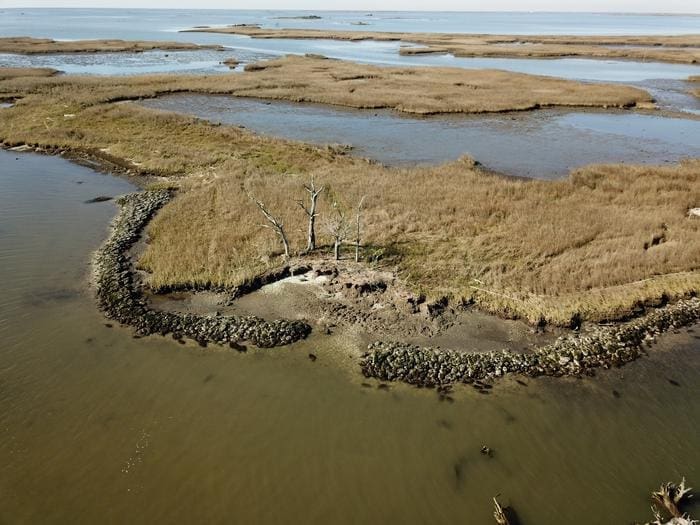
Jayur Mehta and colleagues argue a synergy of both approaches is required to protect coastal archaeological landscapes. The authors used LiDAR digital elevation models, site location data, and NOAA sea level rise models to define impacts and inundation of archaeological sites for the US Gulf coast regions of the Florida Big Bend and the Mississippi River Delta.
In Florida’s Big Bend region, 11 Indigenous sites are already at or below sea level and a further 142 mound and midden sites could be submerged in the next century — including a monumental mound site known as Garden Patch.
In the Mississippi River Delta, 11 Indigenous sites are at or below sea level and a further 107 mound and midden sites are at risk — including the Magnolia Mounds complex and the Bayou Grand Cheniere site. Similar risks exist for prehistoric sites in low-lying parts of the Netherlands, cultural heritage sites in Oceania, and archaeological sites in coastal Peru.
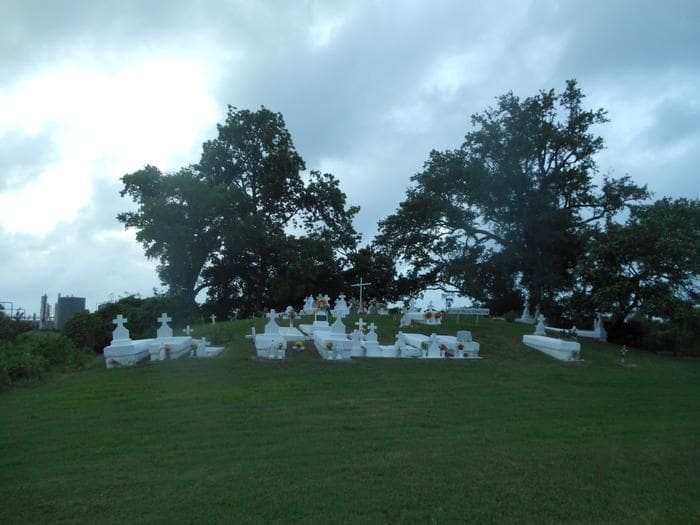
In Peru, the rapid pace of agricultural expansion further exacerbates threats to cultural resources. The authors call for policies integrating coastal ecosystem management with archaeological and historical resource preservation, using Indigenous traditional ecological knowledge, and cultural-ecosystem services approaches.
According to the authors, coastal archaeological resources provide coupled ecosystems resilience in biocultural landscapes and that an integrated approach is necessary for preservation and restoration.
Journal Reference:
Jayur Madhusudan Mehta, Elizabeth L Chamberlain, Matthew Helmer, Elizabeth Haire, Mark D McCoy, Roy van Beek, Haizhong Wang, Siyu Yu, ‘Preserving coastal environments requires an integrated natural and cultural resources management approach’, PNAS Nexus 4 (4), pgaf090 (2025). DOI: 10.1093/pnasnexus/pgaf090
Article Source:
Press Release/Material by PNAS Nexus
New UNCG research shows southern shrews shrink in winter
The study, published in the May 2025 issue of The American Naturalist, found that the masked shrew (Sorex cinereus) reduces its body mass by 13 percent in the colder months; the creature then grows larger in spring when conditions improve. In addition to a shrinking body, the team also found seasonal changes in the height of the creature’s braincase (the portion of the skull that houses and protects the brain) and the length of the femur.
“Shrinking the body and its parts is in fact a clever survival strategy,” says Dr. Bryan McLean. “And it’s one that’s important for us to understand as mammals face a constantly changing planet.”
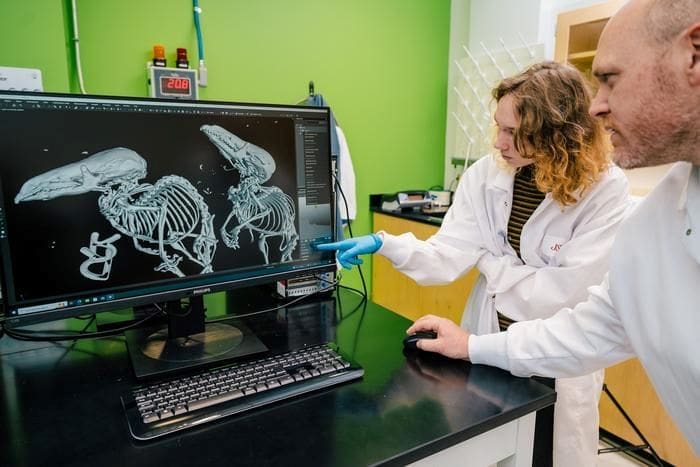
Known as Dehnel’s phenomenon, this seasonal shrinking has been observed in other mammals but most often in shrews, which are small, insect-eating animals unrelated to rodents. Dehnel’s phenomenon is an extreme example of “phenotypic plasticity” – the ability of an organism to alter its physical form in response to environmental changes.
“We don’t know how common Dehnel’s phenomenon is among mammals, but we know it is rarer in nature than other energy-saving strategies mammals use, like hibernation,” said McLean.
McLean and his team of graduate and undergraduate students analyzed 125 masked shews that were trapped in North Carolina’s Pisgah National Forest from 2021 to 2023. The team used “pitfall traps” buried in leaf litter to capture the shrews. The animals were weighed in the field, then brought to UNCG’s Joint School of Nanoscience and Nanotechnology for microCT scans to examine various skeletal dimensions. Specimens and associated data are archived in the UNCG Mammal Collection. Researchers from Georgia Southern University were also involved in the research.
“Our population of masked shrews is the southern-most yet studied for these multiple different traits,” said McLean, “and the femur measurements we made are the first to show the magnitude of seasonal change in the long bones of the skeleton. This shows that shrews rapidly remodel much of their skeleton.”
Most prior studies of the phenomenon come from Europe. To place their new results in context, the researchers also conducted a meta-analysis of 74 other studies from across the Northern Hemisphere, combining that research with their own findings to understand what factors drive Dehnel’s phenomenon. McLean and his team developed statistical models that accurately predicted the amount of body shrinkage they observed based solely on the climate at the North Carolina site.
“This analysis reveals the generality of Dehnel’s phenomenon in Sorex shrews,” explains McLean. “Across many populations of shrews on three continents, the degree of body mass and braincase height shrinkage is greatest in areas with the lowest cool-season temperatures. So, fall and winter temperatures predict Dehnel’s phenomenon in these animals.”
“Phenotypic plasticity is a key way that shrews and many other species respond to changes in temperature,” McLean notes. “By learning more about this process, we can start to understand how mammals buffer against rapidly changing climates.”
Journal Reference:
Bryan S. McLean, Kristin E. Stierman, Leo R. Ivey, Amanda K. Weller, Olivia S. Chapman, Ava C. Miller, Jada S. Byrd, Abigail Mendoza Garcia, and Stephen E. Greiman, ‘Seasonal Body Size Plasticity and the Generality of Dehnel’s Phenomenon in Sorex Shrews’, The American Naturalist (2025). DOI: 10.1086/735018
Article Source:
Press Release/Material by University of North Carolina at Greensboro
Adjusting trees’ internal clocks can help them cope with climate change
A new study from Umeå University has revealed that the trees’ circadian clock guides their growth and the timing of seasonal events like the appearance of leaves in spring. The researchers investigated the growth of genetically modified poplars in greenhouse and field conditions, combining statistical learning and plant biology methods. Their findings suggest that adjusting clock-associated genes could help trees better synchronize with changing climates, offering new opportunities for forestry.
Trees, like humans, have a circadian clock that regulates their daily and seasonal rhythms. Research has suggested that this clock is important to regulate growth and the timing of important seasonal events, like for example bud formation in autumn and bud opening in spring. However, most of this research has been done in controlled greenhouse conditions and not outside in the field where plants are exposed to natural environmental conditions. In the field, as in the real world, temperature fluctuations, insect predation and other factors affect plant growth.
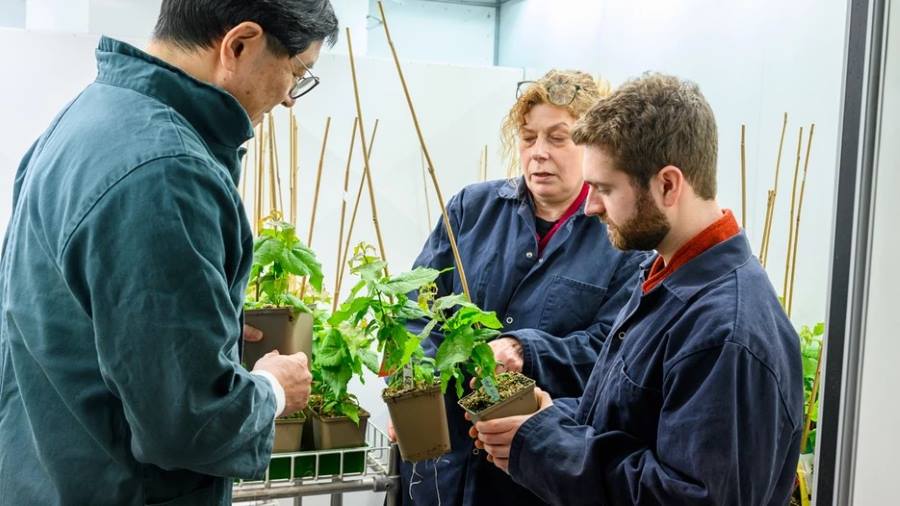
To address this, the researchers conducted an extensive study based on 68 genetically modified poplar or aspen lines with different, modified properties. Among the genes that were modified were many associated with the circadian clock. These trees’ growth was studied in multiple greenhouse and field experiments over several years. The results clearly showed that the circadian clock has a strong role in regulating tree growth and the timing of seasonal events in the life of a tree, like the budding of leaves.
“Our study is the first to combine datasets from greenhouse and field studies to show that multiple aspects of the circadian clock system influence tree growth and the timing of life-cycle events,” says Bertold Mariën, lead author of the study. “By applying statistical modelling to these datasets, we were able to pinpoint which circadian clock-associated genes impact tree growth or, for example, the time when leaves appear or change colour.”
The study provides a new perspective on how trees use their circadian clock to coordinate their growth with the environment. For example, certain genetic modifications in key clock regulators changed the trees’ sensing of the day length and allowed trees to continue growing later into the season.
“This study is a proof-of-concept that trees conditioned to a particular length of day at a certain latitude can be adapted to a new latitude, effectively extending their growing season. This is especially useful at higher latitudes like in Northern Sweden where short growing seasons limit timber production,” explains Maria E. Eriksson, last author of the study.
Additionally, some gene modifications improved the trees’ resilience under environmental fluctuations. By focusing on these specific genes, it would be possible to breed tree varieties that are better adapted to rapid changes in the local climate, and to new growing locations, for example in other latitudes.
“In the future, forestry management could be improved by integrating trees’ circadian clocks and their natural growth cycles with traditional practices,” says Eriksson. “In this way, tree growth and resilience could be optimized in a changing world.”
Beyond the implications for forestry, the study also has relevance for global vegetation models that predict forest growth and carbon storage. The importance of the clock in shaping trees’ sensitivity to environmental conditions is often underestimated in these models, according to Mariën. He concludes: “By properly incorporating our findings on the circadian clock into global vegetation models, we can improve predictions of how forests will respond to climate change.”
Collaboration Across Disciplines
This study was the result of a collaboration between researchers at Umeå Plant Science Centre (UPSC), the Department of Mathematics and Mathematical Statistics, and the Integrated Science Lab (IceLab) at Umeå University as well as several other national and international research groups. Bertold Mariën, the lead author, was funded through a Kempestiftelserna-IceLab collaborative postdoctoral fellowship with Maria E. Eriksson (UPSC) and Jun Yu (Mathematical Statistics). Their research highlights how combining statistical learning with plant science can clarify the role of biological timing in tree growth.
Journal Reference:
Mariën, B., Robinson, K.M., Jurca, M. et al., ‘Nature’s Master of Ceremony: The Populus Circadian Clock as Orchestrator of Tree Growth and Phenology’, npj Biological Timing and Sleep 2, 16 (2025). DOI: 10.1038/s44323-025-00034-4
Article Source:
Press Release/Material by Gabrielle Beans Picón | Umeå University
Featured image credit: Gerd Altmann | Pixabay




